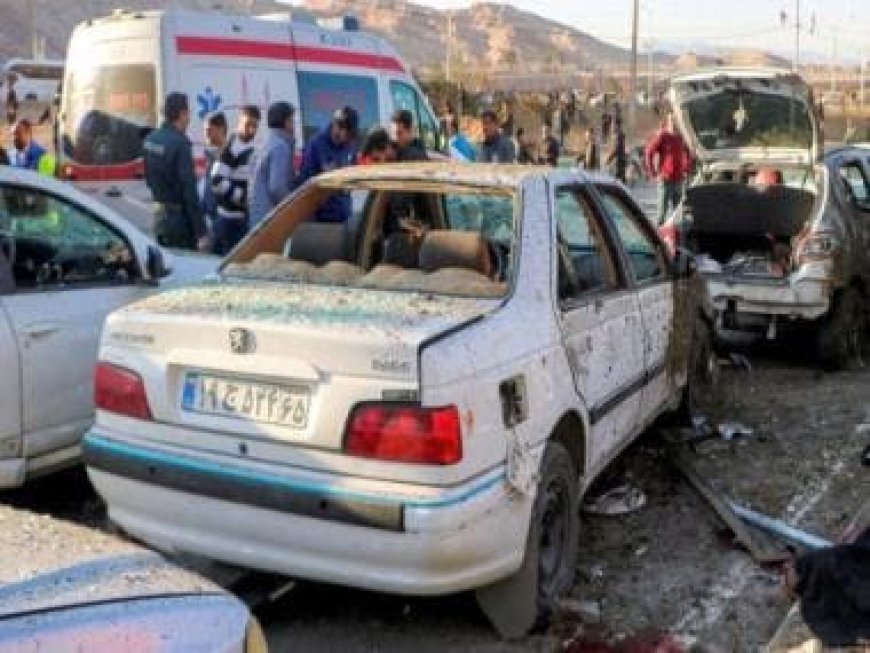Twin blasts in Kerman: How ISIS has unleashed terror in Iran over the years
Twin blasts in Kerman: How ISIS has unleashed terror in Iran over the years

After much finger pointing and accusations being hurled, the Islamic State jihadist group (ISIS) on Thursday evening claiming responsibility for the twin blasts that took place a day before, killing 84 people.
The extremist group called the attack a “dual martyrdom operation” in which their members approached a ceremony, which was being marked to commemorate the death of General Soleimani and detonated explosive belts strapped to their bodies “near the grave of the hypocrite leader.”
But why has the ISIS targeted Iran, in what is now being called the deadliest attack since its 1979 revolution? We get you the answers.
ISIS behind the twin bombings
On Thursday, 24 hours after the blasts claimed 84 lives and injured many others, ISIS media wing Al-Furqan issued a statement, claiming two suicide bombers, who are brothers, had detonated their explosive vests as Shiite mourners gathered for the fourth anniversary of the assassination of Soleimani near his grave in his hometown of Kerman.
The statement, titled “And Kill Them Wherever You Find Them,” named the two bombers – Omar al-Movahed and Seifollah Mujahed – and said they targeted a gathering of “polytheists” near the grave of their “dead leader” Soleimani.
However, the jihadist group didn’t provide any more details or evidence corroborating their statement.

Iran’s officials haven’t yet reacted to ISIS’ claims of the blast. Earlier, Iran’s interior minister had said that the blasts near the grave site of Soleimani came in short succession – 20 minutes apart of each other – the deadlier one coming second as others rushed to help the wounded.
Videos had showed large numbers of people running in the area after the explosions, bloodied bodies on the ground and ambulances driving through the packed crowds.
Shortly after the blasts jolted the city, accusations had been hurtled with Tehran pointing fingers at Israel and the United States. However, Washington had denied any involvement; US State Department spokesperson Matt Miller had said that the US does not “have any independent information” about the explosions, and that the State Department has “no reason to believe that Israel was involved.”
ISIS’ past attacks in Iran
ISIS has been targeting Iran in recent years, killing dozens of Shia Muslims in the country. The first such incident goes back to 2017 when members of ISIS had carried out an assault on the parliament building in Tehran and the mausoleum of the republic’s founder, Ruhollah Khomeini.
On 7 June 2017, three assailants, one with a pistol and two with AK-47 assault rifles, carried out the attack in central Tehran. And around half an hour later, an attacker opened fire at the Mausoleum of Ayatollah Khomeini, injuring several members of the public.
The twin attacks had claimed the lives of 13 people, plus six assailants, and forty-three were injured.

In September 2018, ISIS once again attacked Iran in the city of Ahvaz, where gunmen shot at a military parade, killing 25, including members of the Revolutionary Guards.
And in October 2022, a gunman entered the Shah Cherag Shrine in Shiraz and opened fire, killing 13 and injuring 40 before being shot dead. Afterward, an ISIS statement claiming responsibility for the incident declared that its purpose was to “let the rawafidh [rejectionists, a derogatory term for Shia Muslims] know that the companions [of the Prophet Muhammad] have descendants who inherit revenge generation after generation.”
Iran has also said in the past that they have foiled several other ISIS attacks in the past. One of them was in September last year when Iranian intelligence thwarted a plot to carry out a series of bombings in Tehran, arresting dozens of elements linked with ISIS. Iran had then announced that it had discovered a plot to carry out 30 simultaneous bombings in crowded areas of Tehran, and have arrested all the participants of the plot.
ISIS’ bloody battle against Iran
But why has the ISIS been gunning for Iran? It goes back to the issue of Sunnis vs Shias. The ISIS is a Sunni organisation, stating its mission as killing apostate Muslims, including Shiites. Iran is a Shiite country, led by a theocratic government in which Shiite clerics are in charge.
Bruce Hoffman, a terrorism expert at Georgetown University, had told CFR.org earlier that the ISIS sees itself in literally an apocalyptic battle with the Shia. In the aftermath of the 2017 attacks, he had said, “The attacks are also meant to burnish its credentials as a defender of Sunnis everywhere and vanguard of the struggle against the Shia.”

Moreover, there’s bad blood between the two as Iran has played a highly visible role in helping Shia militias and the Bashar al-Assad regime fight ISIS elements in Iraq and Syria.
Colin P Clarke, a counter-terrorism analyst, told the New York Times that he suspected that it was the ISIS’ Khorasan affiliate that may have committed Wednesday’s attack. “ISIS-K has demonstrated both intent and capability to attack targets inside Iran proper,” Clarke said. “ISIS-K wants to attack Iran, because Tehran is the most prominent Shia power and the ire of ISIS-K’s highly sectarian agenda. More so than other ISIS branches, ISIS-K propaganda continuously focuses on denigrating Shia as apostates.”
Moreover, the attack at a ceremony to commemorate General Soleimani is significant. General Soleimani, known as Iran’s “shadow commander”, is considered as the architect of ‘axis of resistance’, a loose-knit alliance that includes Shia Muslim groups and governments in Yemen, Syria, Lebanon, Gaza and Iraq, with differences and varying levels of proximity to one another and to Tehran. It is reported that the Soleimani-led Quds Force had grown this network bigger.
While it is unknown what will happen next and if Iran will retaliate, analysts believe that by claiming responsibility of the twin blasts will help ease concerns over tensions soaring the West Asia region.
With inputs from agencies
What's Your Reaction?

























































